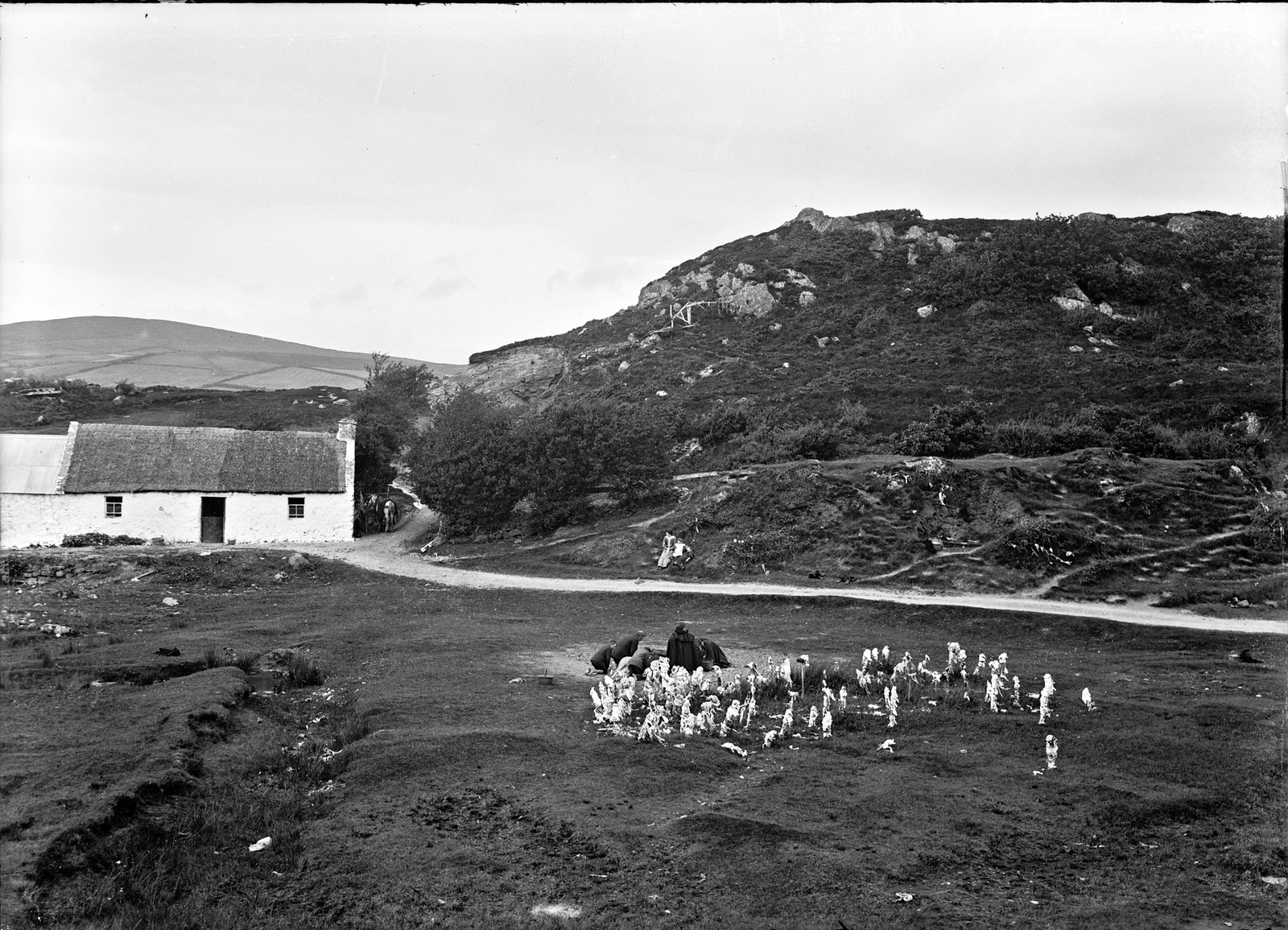
Doon Well, Donegal Highlands, Termon, County Donegal: photographer unknown, between ca.1900-1939 (Eason Photographic Collection, National Library of Ireland)
I
Ablutions, dipping in the waters, washing the afflicted parts with a cloth,
Ablutions, dipping in the waters, washing the afflicted parts with a cloth,
Tying the wet washcloth to a branch. The rag disintegrates over time,
The ailment is supposed to fade away as well. Circumambulation (or circling)
Of the well a set number of times and making an offering of a coin, pin or stone
The ailment is supposed to fade away as well. Circumambulation (or circling)
Of the well a set number of times and making an offering of a coin, pin or stone
Can help to facilitate cures. Crutches, bandages and rosary beads left behind
Give evidence of the miraculous in actu. The Well rises within
An expanse of greensward, through which a tiny stream wanders silently,
Without murmur, without ripple. In the marshy soil rushes grow in profusion
And blue and yellow flowers lift their bright heads. On one side the marsh is bounded
By the rocky height of Doon, and on the other by a lower, longer, grass-clad hill.
One white-washed, straw-thatched little cottage nestling under the shadow of Doon Rock
Is the only sign of human habitation. A narrow, rutty road leads across the bog to the Well.
It makes more evident the loneliness of the spot, for it seems to remind
That there is a beyond, a place of life, of noise, of rush.
This long white streak unites Doon with the outside world. ...
An expanse of greensward, through which a tiny stream wanders silently,
Without murmur, without ripple. In the marshy soil rushes grow in profusion
And blue and yellow flowers lift their bright heads. On one side the marsh is bounded
By the rocky height of Doon, and on the other by a lower, longer, grass-clad hill.
One white-washed, straw-thatched little cottage nestling under the shadow of Doon Rock
Is the only sign of human habitation. A narrow, rutty road leads across the bog to the Well.
It makes more evident the loneliness of the spot, for it seems to remind
That there is a beyond, a place of life, of noise, of rush.
This long white streak unites Doon with the outside world. ...
The outside world, that's where we are. Were we ever elsewhere?
Those in mother's parish circle who suffered the most grievous afflictions
Returned from pilgrimages to the holy wells of Ireland imbued with a fresh distillation
Of holiness. The women would gather in each other's living rooms and say
Rosaries over and over, holding the beads aloft with cancer-weakened arms.
Ablutions, dipping in the waters, washing the afflicted parts with a cloth,
Tying the wet washcloth to a branch. The rag disintegrated over time,
The ailment was supposed to fade away as well. Also circumambulation, circling
Of the well a set number of times and making an offering of a coin, pin or stone.
The ailment was supposed to fade away as well. Also circumambulation, circling
Of the well a set number of times and making an offering of a coin, pin or stone.
II
A friend died recently after "a long struggle with...". This friend was equally
A believer, though of a faith nothing like my mother's. Still his devotion to prayer
And to the ritual iteration of the articles of his belief proved his great strength in his going. Miracle cures obsessed the good women in my mother's parish circle.
Lourdes was a common destination for devout pilgrims with terminal illnesses.
I marveled at the strength of my friend. The believer. He retained his generous sense of humour
The nimble lightness and thoughtfulness till...
A curtain comes down. Nobody ever really believes they are going to die,
Else how would it be possible to draw one more breath,
Until... and then they do. I don't know if people believe in miracle cures any more.
The women in my mother's parish circle prayed in a group. They met in one another's living rooms
And said the rosary with hands holding the beads aloft strung across both extended arms
And the murmuring susurrations of this group of women as they prayed
Contained as I then guessed all the accumulated woes and hardships of their several lives
In which grief and illness and habits of pinching and scrimping were general and constant
But nobody complained, everything was given up for and suffered on behalf of
The Poor Souls, and of course the Poor Souls would never know
So there were really never any perceptible returns upon all this athletic investment
Of prayer on the part of these in fact no longer young women,
And anyway profit even spiritual profit even profit for the Poor Souls
Never played a part, was never a part of anyone's motive, in fact would have ruined
Everything. One another's company would have to have been the gain,
The communal benefit of shared company as one would have to suppose
Rather than actually remember, the actual memory is like an old photo
Scratched and marred by years of handling, so that what one most notices now
Scratched and marred by years of handling, so that what one most notices now
Are the marks of damage and decomposition, in which sense every old photo
Is also a photo of death, for nothing in it is alive any more, and knowing this
Ought to make one feel sad in looking, and sometimes that does happen
But more often now the mind is merely a clouded window upon...
So that the nights go by and... no praying and... no miracle cure so...
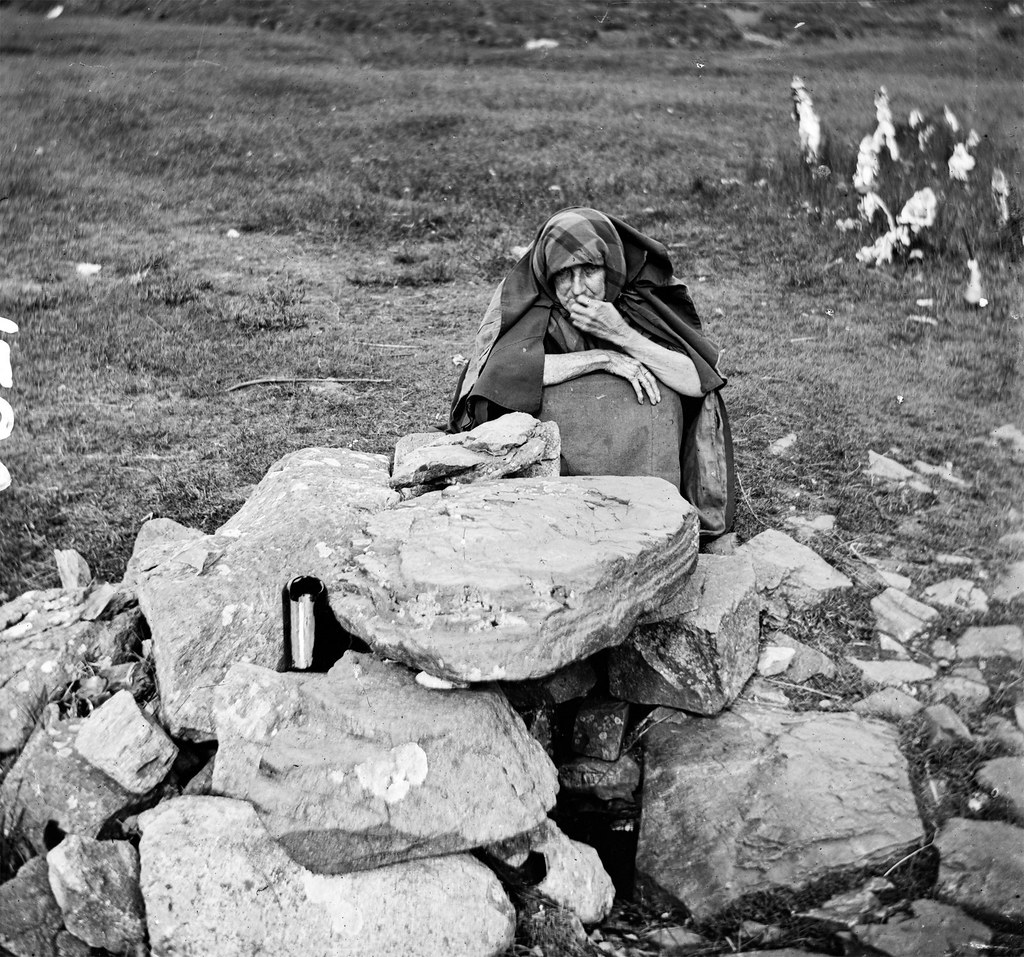
Woman at Doon Well, Kilcrenan, County Donegal: stereoscopic view by James Simonton / Frederick Mares (?), c. 1870 (Lawrence Photographic Collection, National Library of Ireland)
From the DIA: Class: Ritual site - holy well
Townland: DOON
Description:
Doon Well consists of a modern, enclosing wall from which steps lead
down to a spring well. Nearby is a sapling to which are attached
mementoes of the cures sought at the well. The area was landscaped in
2006 (SMR file). Kinahan (1889, 284) records the following regarding
Doon rock: 'Its modern fame is said to be due to Fathers Freel and
Gallagher, who, after being in foreign parts for many years, returned
about two hundred years ago to this country, and blessed the adjoining
well, since which time it is much resorted to by pilgrims in the summer
and autumn, the waters curing cripples, sore eyes, and various other
ailments; while water carried from the well, and sprinkled on the
crops, stops the potato disease, blight in corn, and various other
disasters. Of late years, the number of pilgrims have so much increased
that a public road has been made into the well.’ It was described by Ó
Muirgheasa in 1936: 'Doon Well, beside Doon Rock, and not far from
Kilmacrenan, is now the most frequented Holy Well in Tirconaill, though
one of the youngest -- if popular tradition speaks true -- as its origin is
ascribed to Lector O'Friel. Local tradition says he is buried in
Kilmacrenan old graveyard, and a white stone in the wall over the grave
marks the spot. There is no special feast day or season for this
pilgrimage. Prayers to be said at the well: Our Father and Hail Mary
(five times) and Creed for your Intention. Same for every bottle of
water you take. Our Father and Hail Mary for Father Friel who found it.
Same for Father Gallagher who blessed it. Same for the man who put
shelter around it" ' (Ó Muirgheasa 1936, No. 81, 155-6).
The above description was derived from the 'Archaeological Survey of County Donegal. A description of the field antiquities of the County from the Mesolithic Period to the 17th century.' Compiled by: Brian Lacey with Eamon Cody, Claire Cotter, Judy Cuppage, Noel Dunne, Vincent Hurley, Celie O'Rahilly, Paul Walsh and Seán Ó Nualláin (Lifford: Donegal County Council, 1983). In this instance the entry has been revised and updated.
The above description was derived from the 'Archaeological Survey of County Donegal. A description of the field antiquities of the County from the Mesolithic Period to the 17th century.' Compiled by: Brian Lacey with Eamon Cody, Claire Cotter, Judy Cuppage, Noel Dunne, Vincent Hurley, Celie O'Rahilly, Paul Walsh and Seán Ó Nualláin (Lifford: Donegal County Council, 1983). In this instance the entry has been revised and updated.
-- Niall McAuley, commenter at National Library of Ireland
And the nearby Doon Rock: Class: Inauguration site
Townland: DOON
Scheduled for inclusion in the next revision of the RMP: Yes
Description: Doon Rock is traditionally believed to be the inauguration site of the O'Donnells. In some respects, it can be said to resemble an inland promontory fort. It consists of a natural mound of rock somewhat oval in plan c. 150m N-S and c. 75m E-W. It rises dramatically from the surrounding wet land and is naturally defensive.
Townland: DOON
Scheduled for inclusion in the next revision of the RMP: Yes
Description: Doon Rock is traditionally believed to be the inauguration site of the O'Donnells. In some respects, it can be said to resemble an inland promontory fort. It consists of a natural mound of rock somewhat oval in plan c. 150m N-S and c. 75m E-W. It rises dramatically from the surrounding wet land and is naturally defensive.
-- Niall McAuley, commenter at National Library of Ireland
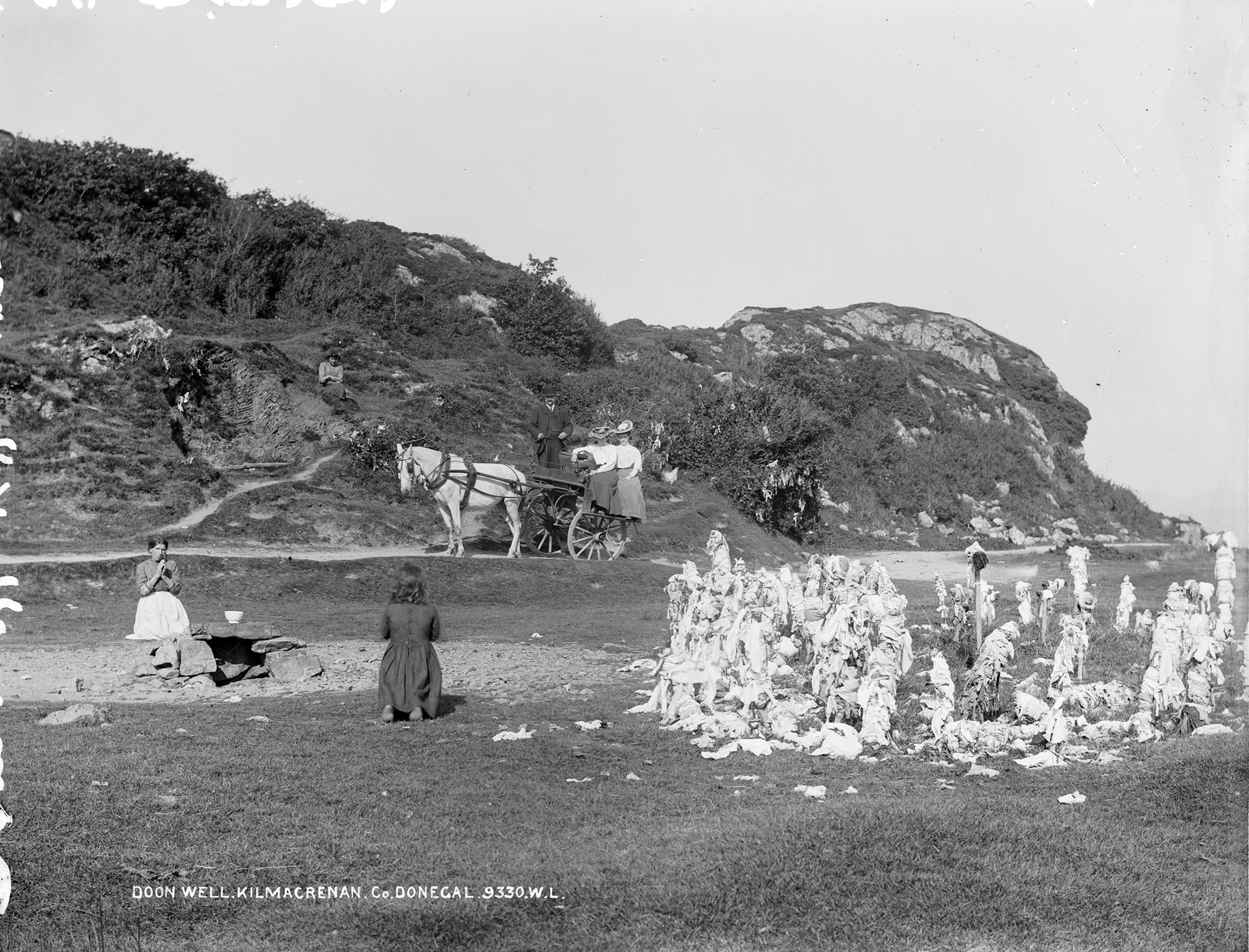
Doon Well, Kilmacrenan, County Donegal: photo by Robert French (?), c. 1900 (Lawrence Photographic Collection, National Library of Ireland)
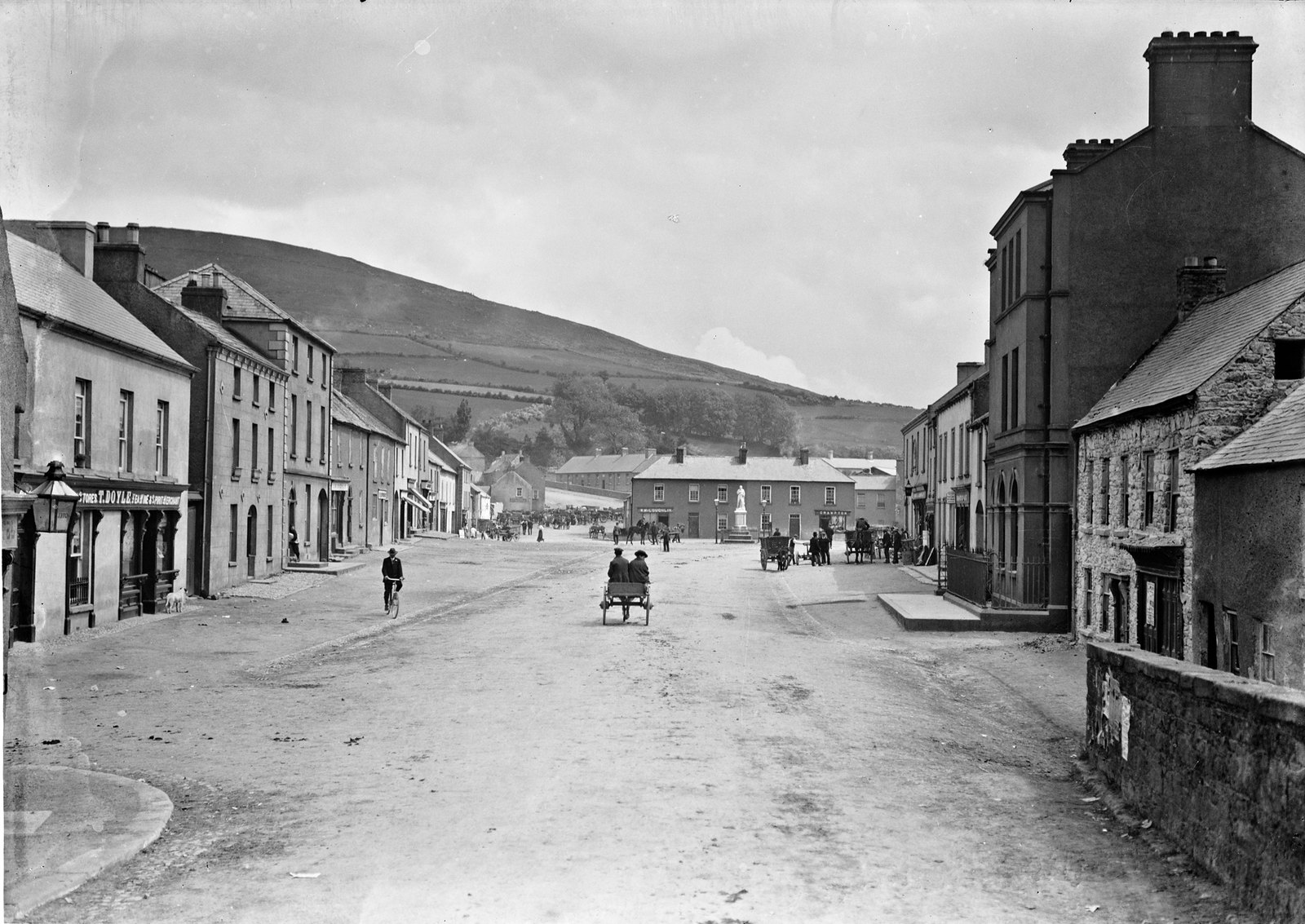
The Square, Baltinglass. County Wicklow: photographer unknown, between ca.1900-1939 (Eason Photographic Collection, National Library of Ireland)
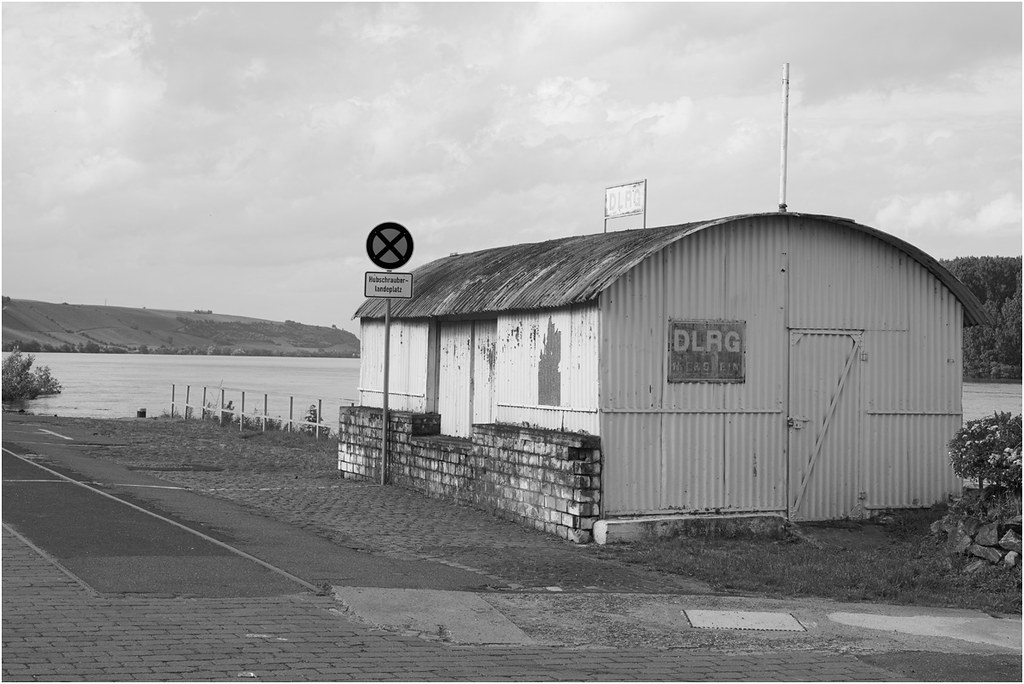



7 comments:
Well, there were holy wells, and there were holy wells... that stayed open a bit later... and perhaps featured a bit less of the praying... and there were those who frequented them... sometimes to the detriment of good name.
There was for example The Old Man of the Holy Well, who hung about Tobernalt holy well, near to Sligo, County Sligo.
Well, well.
Some believe the name of that particular well may well mean "Well of the Insane" (Tobar na nGealt). (Cistercians used the nearby Cottage Island as an asylum for lepers and the insane in medieval times. These people would likely have rowed the short distance across the lake to visit the Holy Well in search of a cure.)
My latest visit there was only yesterday, still I am unable to remember it, a certain testimony to the power of those waters.
Rowing Towards the Holy Well of the Insane on St Valentine's Day
Because I'm right-handed and still write by hand, I'd give my left arm to have the faith with which your friend (I think he's a friend we shared) died. If it does nothing else, five times prayer and a sixth call for poetry, interrupt the thought-continuums that form in war times and zones. I'm always amazed when the grief-stricken father of a slaughtered Muslim child can say, "Allahu Akbar," or some equivalent of "As God wills. . . ." I don't see this world as a seed with God at its core or a rock in Beckett's pocket with God's hand wrapped around it. Like Spinoza, I believe the Creation itself is the only Incarnation and no greater faith has ever been exhibited than when God became its blood and bone and flesh. That's all the deity wrote. Maybe he thought it would be enough. And maybe, as my Sufi sheikh used to say, "It is enough." Because it is all there is. "I've been up all night crying and praying for help for my students," he told us one Sunday morning, "but God just keeps saying to me, 'I gave them everything they need. What more is there to give?'" Emerson and Whitman would give the same answer, and Emily, too, if she hadn't treated Whitman's "Leaves of Grass" like an early Henry Miller novel. She threw it in the fire--a fate another reader, Abraham Lincoln, said he spared the book when he returned it to its owner and his law partner. "At The Holy Well" is a wondrous, not just wonderful, poem. Thank you fir it.
Thanks very much, David. I too am right-handed, always wrote by hand, but have now lost the function of my right hand, so that typing these few characters, or of course anything else, requires a comical series of left-handed pecking blunders, the foolishness compounded by the fact I'm going blind and cannot make out the keys without forcing all the little abused and complaining vertebrae in my ruined spine to incline the whole hulk forward over the keys, thus achieving the attitude (in the 18 c sense of attitude, not mood) of a man in prayer... and that's as close to prayer as I ever get. But in truth it's more like being stung by thousands of bees. Indeed I rarely attempt "writing" per se for this reason. This was that rare attempt... it took only four months to complete... and I would not have persevered but for some obscure compulsion too mysterious to dare to attempt to understand... you know how it is, blah blah... poets talking about their poems have to be the greatest bores in Creation!
God is Great!
(No buildings fell down when my left index finger pecked those keys, but maybe if I'd made them righthanded...?)
And yes, the passing of our dear and much lamented poet friend Abdal-Hayy aka Daniel Moore, son of Oaktown, whom I met a half century ago not far from the spot where this pecking order is being spelt out, is the person in the poem who follows a faith unlike my mother's... maybe maybe not so unlike, after all...
So bore me till the end,
may the well never
ever run dry.
k
Thanks, Tom, for the great poem (and beautiful photos). Some of my older Irish relatives have gone to Medjugorje seeking miracles, though I'm sure Lourdes is still in the picture. But back before foreign travel was an option, local holy wells would have to do the trick.
Thanks, kent and tp.
Well... from the West Side of Chicago, Lourdes and Ireland probably seemed equidistant. But of course a local itinerary would always be best. For the multiply afflicted women of the parish there was in fact mostly just staying home and working the beads, early Mass every morning, various holy card rituals, that lighting of candles in the hushed dark mouldering church, and so on.
There were always the favoured miraculous figures of the moment. Padre Pio, who was to have had the stigmata appearing on his hands, a kind of holy skin disease. But he hadn't yet been canonized.
There were the various adolescent girls in various underprivileged places to whom the Blessed Virgin had appeared.
Bernadette Soubirous, who had been canonized in the early Depression years, was by this time what would now be called iconic. Song of Bernadette, the movie.
There were the historical exhumations, the waxing over of the skin, the findings that the internal organs were eternally protected from corruption, the several spooky films, and the million tourist pilgrimages to the Grotto that had ensued.
Of course never having been an adolescent girl I'd not have had any way of knowing about that particular form of veneration favoured among the women of the parish but I suppose the frustrations from which it likely arose must be universal.
Abdal-Hayy believed in and drew strength and courage from his Sufi chanting and prayer rituals, and repeatedly recommended these to me, along with his recommendation of the healing powers of CBDs.
At this point the siren song of whatever gets you to the eternity without having to pass Go and collect the $200 would sound best to me. Collection has to be the worst.
Thanks for such an informative article. It is important to keep the old traditions and places alive. I wonder, has any one, by any chance, a copy or knowledge of a prayer card or souvenir card from or about Doon Well which would have been given to a baby in the early 1960s? I am told one was given to my husband on his birth years ago and as it is not in his possession now, he would like to see a copy of the same if possible. Thanks again, kind regards, Lee.
( please message me @ leewillis60@hotmail.com if you can help. )
Post a Comment